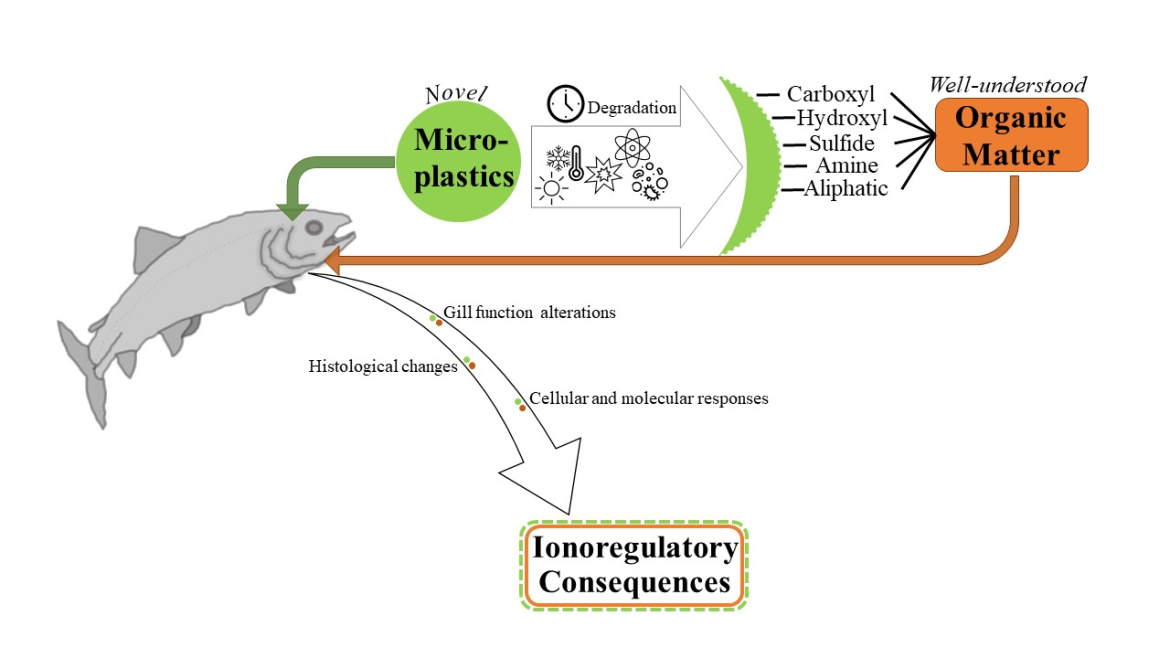
ABSTRACT
From review of the very few topical studies to date, we conclude that while effects are variable, microplastics can induce direct ionoregulatory disturbances in freshwater fish and invertebrates. However, the intensity depends on microplastic type, size, concentration, and exposure regime. More numerous are studies where indirect in- ferences about possible ionoregulatory effects can be drawn; these indicate increased mucus production, altered breathing, histopathological effects on gill structure, oxidative stress, and alterations in molecular pathways. All of these could have negative effects on ionoregulatory homeostasis. However, previous research has suffered from a lack of standardized reporting of microplastic characteristics and exposure conditions. Often overlooked is the fact that microplastics are dynamic contaminants, changing over time through degradation and fragmen- tation and subsequently exhibiting altered surface chemistry, notably an increased presence and diversity of functional groups. The same functional groups characterized on microplastics are also present in dissolved organic matter, often termed dissolved organic carbon (DOC), a class of substances for which we have a far greater understanding of their ionoregulatory actions. We highlight instances in which the effects of microplastic exposure resemble those of DOC exposure. We propose that in future microplastic investigations, in vivo tech- niques that have proven useful in understanding the ionoregulatory effects of DOC should be used including measurements of transepithelial potential, net and unidirectional radio-isotopic ion flux rates, and concentration kinetic analyses of uptake transport. More sophisticated in vitro approaches using cultured gill epithelia, Ussing chamber experiments on gill surrogate membranes, and scanning ion selective electrode techniques (SIET) may also prove useful. Finally, in future studies we advocate for minimum reporting requirements of microplastic properties and experimental conditions to help advance this important emerging field.